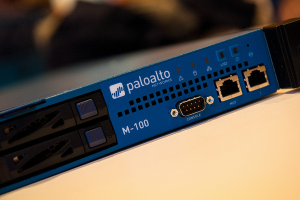Networking to follow in the steps of compute and storage | #OCPSummit2015
James Liao believes that networking will soon undergo a paradigm shift. The virtualization trend that has sparked wildfires of innovation in software and compute will spread to the network. Right now, Liao explained that the problem is that “a virtual machine which takes sixty seconds to create takes one day to configure.” That’s where Liao’s company, PICA8, Inc. comes in. Liao stated that the company has plans to begin “standardizing the hardware, bringing more software, creating more applications, creating more innovation in the software so [it] can create virtualization for networking.”
This business model, said Liao, also represents some serious benefits for vendors. With “a lot of segregation in the supply chain,” he explained, it’s possible to “separate hardware from software, the control plane from the data plane..the physical network from the virtual network.” This type of disaggregation creates “a lot of opportunity to all vendors.” according to Liao.
Enabling differentiation via the network
PICA8 represents a break away from the Cisco Systems, Inc. way of doing things. Liao described conversations with customers focused on finding ways to support the unique needs of each individual company, as opposed to using a pre-defined Cisco structure. PICA8 embraces the fact that “everybody is using different applications,” Liao stressed, and therefore recognizes that “it doesn’t take sense to use the same recipe.”
Growing interest in white box
Essential to the PICA8 method is the white box. It’s a technology that’s rapidly growing in popularity, in the United States, Europe, and Asia. It’s “very efficient, very high performance, very low cost, easy to manage, easy to program,” explained Liao. This ease of use is why vendors like Hewlett-Packard Development Company, L.P., Dell Inc., and Juniper Networks, Inc. “have already joined the game,” Liao said. Some Asian Pacific companies like Quanta Computer lnc. and Celestica Inc. are already going strong. There are, he continued, “dozens of vendors trying to create new innovation to change the efficiency of the network.”
PICA8’s four step migration plan to SDN
Networks are getting more complicated, said Liao. And once customers have have reached the decision that it’s too complicated and they need to manage their networks via automation, PICA8 has a four step plan to bring in tools to automate their platforms. The steps he listed are:
1. Bring in white box
2. Begin architecture change
3. Automate configuration
4. Reach SDN technology
While the steps may seem straightforward, Liao highlighted that the “time it takes to get there depends.” Some customers are able to migrate to SDN in about a year, while others are “more conservative.” Some companies can take anywhere between eighteen months to a year to get everything perfect, ensuring that each step is proven and there’s “no downtime at all.”
Above all, Liao believes that “mindset is the biggest barrier.” Once customers are able to recognize that they need to improve their networks along with storage and compute, he explained, “there are a lot of tools out there.”
Watch the full interview below, and be sure to check out more of SiliconANGLE and theCUBE’s coverage of OCP Summit 2015.
A message from John Furrier, co-founder of SiliconANGLE:
Your vote of support is important to us and it helps us keep the content FREE.
One click below supports our mission to provide free, deep, and relevant content.
Join our community on YouTube
Join the community that includes more than 15,000 #CubeAlumni experts, including Amazon.com CEO Andy Jassy, Dell Technologies founder and CEO Michael Dell, Intel CEO Pat Gelsinger, and many more luminaries and experts.
THANK YOU













